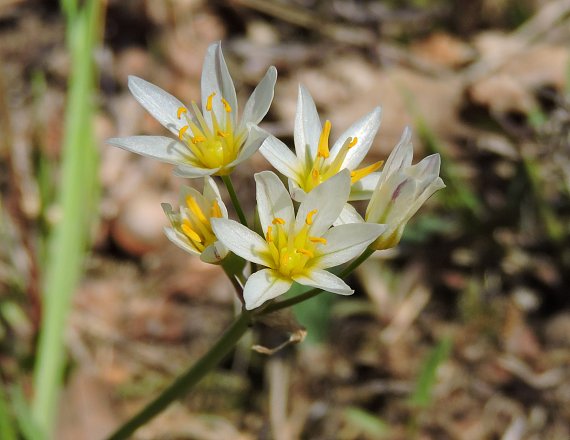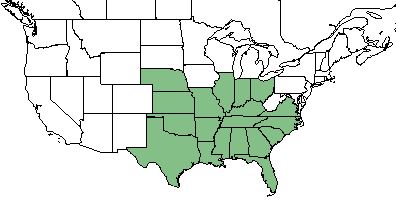Difference between revisions of "Nothoscordum bivalve"
(→Distribution) |
|||
| Line 25: | Line 25: | ||
<!-- Basic life history facts such as annual/perrenial, monoecious/dioecious, root morphology, seed type, etc. --> | <!-- Basic life history facts such as annual/perrenial, monoecious/dioecious, root morphology, seed type, etc. --> | ||
==Distribution== | ==Distribution== | ||
| + | This species is found from southeastern Virginia, westward to southern Ohio and Kansas, southward to central peninsular Florida, Texas, and South America.<ref name="Weakley 2015"/> | ||
| + | |||
==Ecology== | ==Ecology== | ||
===Habitat=== <!--Natural communities, human disturbed habitats, topography, hydrology, soils, light, fire regime requirements for removal of competition, etc.--> | ===Habitat=== <!--Natural communities, human disturbed habitats, topography, hydrology, soils, light, fire regime requirements for removal of competition, etc.--> | ||
Revision as of 13:03, 8 February 2018
| Nothoscordum bivalve | |
|---|---|

| |
| Photo from the Illinois Wildflowers Database | |
| Scientific classification | |
| Kingdom: | Plantae |
| Division: | Magnoliophyta - Flowering plants |
| Class: | Magnoliopsida - Dicots |
| Order: | Liliales |
| Family: | Liliaceae |
| Genus: | Nothoscordum |
| Species: | N. bivalve |
| Binomial name | |
| Nothoscordum bivalve L. | |

| |
| Natural range of Nothoscordum bivalve from USDA NRCS Plants Database. | |
Common names: grace garlic; false garlic;[1] crowpoison[2]
Contents
Taxonomic Notes
Synonym: Allium bivalve[1]
Description
Distribution
This species is found from southeastern Virginia, westward to southern Ohio and Kansas, southward to central peninsular Florida, Texas, and South America.[1]
Ecology
Habitat
N. bivalve occurs around granite flatrocks, in various glades and barrens, open woodlands, along roadsides, and in fields.[1]
Phenology
In the southeastern and mid-Atlantic United States, N. bivalve flowers from mid-March through mid-May and in September through December. Fruiting occurs in May through June and from October through January.[1]